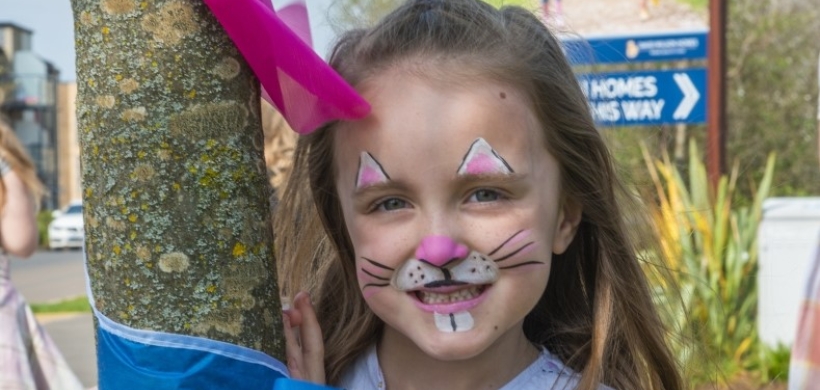Spring is full of new life, making it a great time to help children learn about nature and how we can protect it.
We’ve put together a few tips to help you celebrate whilst helping the planet.
Eco-friendly egg hunt
Egg hunts are great fun for kids (and grown-ups too!).
If you want to use real eggs for your egg hunt, try to buy them from a local farmer and colour them using natural dyes.
You can make your own natural dyes from kitchen scraps, like beetroot peelings. These dyes are safe, fun to make, and mean that you can compost the eggshells afterwards – or add them straight to your garden to fertilise your soil and protect your plants from slugs and snails!
If you prefer to use reusable ‘eggs’ that you can fill with chocolate or other treats, then avoid using plastic eggs and instead choose wooden ones. You can buy wooden eggs online, which children can decorate and then they can be reused again next year.
Or you could join an organised egg hunt in your local community. The LiveWest: Connecting Communities group on Facebook is a great place to find out about events and activities in your local area.
Eco-friendly decorations
Making your own Easter decorations is a fun way to keep the kids entertained whilst avoiding plastic waste.
The best decorations are ones that can be reused again, so you could make Spring bunting out of old clothes or tablecloths that are too small or stained to wear/use again. Just cut out the fabric into the shapes you want – you could do simple triangles, or you could try making bunny or chick shaped bunting – then sew them onto a piece of string.
Making Easter baskets is another fun traditional activity, which can be made eco-friendly. Using a basket you already own, or one from a second-hand shop, fill it with items from around your home or garden, such as flowers, small animal toys, or the eggs from your egg hunt.
Instead of buying the plastic Easter grass from the supermarket, use shredded green paper, as this can be recycled and is much better for the environment.
Eco-friendly lunch
When shopping for your Easter lunch, shop local. Buying food grown locally will reduce your carbon footprint and support local farmers.
Try swapping the traditional lamb for a vegetarian option. Reducing your meat-intake helps the environment by reducing pollution, saving water, and using less land.
Eco-friendly chocolate
Perhaps the part of Easter you look forward to most – the chocolate. The good news is you don’t need to give up chocolate to have an eco-friendly Easter.
Just look for chocolate that is fair-trade and made with sustainable cocoa. This means that the farmers growing the cocoa are treated fairly, and the environment is too.
Try to avoid chocolate containing palm oil. Palm oil is bad for the environment because forests full of wildlife are destroyed for palm oil farming.
Also consider the packaging that chocolate comes in – is it plastic? Can it be recycled? Try to buy chocolate with as little packaging as possible and avoid any plastic or non-recyclable packaging materials.
If you can, you could try shopping at a local independent shop for your Easter chocolate, as this will benefit your local community and may offer more sustainable options than most supermarkets do.
Make your own Easter treats
Instead of buying chocolate, you could make your own Easter treats, shopping for eco-friendly ingredients, or using up food you already have in your cupboard.
This chocolate nest recipe is a great way to use left-over cereal, and is easy to follow, so everyone can get involved.

